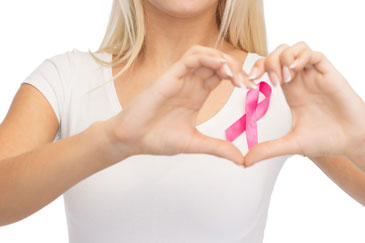
- Maintain a healthy weight: Being overweight raises the risk of breast cancer. This is especially true after menopause, which is the time of life when breast cancer most often occurs. According to the American Cancer Society (ACS), after menopause, most of your estrogen comes from fat tissue and having more fat tissue can increase your chance of getting breast cancer by raising estrogen levels. So, staying at a healthy weight is important for breast health.
- Exercise regularly: Regular exercise is an important breast-healthy habit. A fredhutch.org report points out that research suggests that increased physical activity, even when begun later in life, reduces overall breast-cancer risk by about 10 percent to 30 percent. The ACS recommends getting at least 150 minutes of moderate-intensity activity or 75 minutes of vigorous activity each week (or a combination of both).
- Eat healthy: Experts say that a healthy lifestyle with regular exercise and a proper diet can go a long way in maintaining breast health. The ACS recommends eating at least 2.5 cups of fruits and veggies a day, limiting processed and red meats, and choosing whole grains to help reduce risks of all types of cancer. Foods includes cruciferous veggies (broccoli, kale, cabbage, cauliflower, collard greens and all items that are high in Vitamin A and C), walnuts, Fiber-rich foods (that include beans, barley, bulgur, lentils, peas, artichokes, dates and raspberries), turmeric, oily fish (anchovies, herring, mackerel, or sardines), plant-based protein and flax seeds.
- Quit smoking: Smoking is one of the unhealthiest habits. Research says that long-term smoking can increase the risk of breast cancer in some women. Quitting reduces the risks of cancer and many other serious health conditions.
- Limit your alcohol and caffeine intake: Alcohol contains carcinogen, a substance that can cause cancer. According to ACS research, women who have 2 to 3 drinks a day have about a 20% higher risk of breast cancer compared to women who don’t drink at all. According to the ACS, women should not have more than one alcoholic drink a day, regardless of the type of alcohol.
- Breastfeed your baby for as long as possible: Plan to have your first child before your thirties and breastfeed your baby for as long as you can. Studies report that women who breastfeed their babies for six months or longer have a lower risk of breast cancer.
- Avoid or limit hormone replacement therapy: Studies suggest that postmenopausal women who had hormone replacement therapy (HRT) may be more likely to develop or increase the risk of breast cancer. HRT was used more often in the past to help control night sweats, hot flashes, and other symptoms of menopause. On a safer side, it is best to use it at the lowest dose that works for you and for as short a time as possible. Talk with your physician for better options to manage postmenopausal symptoms.
- Cutback sitting time: According to the ACS, there is growing evidence that sitting time increases the likelihood of developing cancer, especially for women. In their study, women who spent 6 hours or more each a day sitting when not working had a 10% greater risk for invasive breast cancer compared with women who sat less than 3 hours a day, and an increased risk for other cancer types as well. So limit you sitting time, or take a short interval after long sitting.
- Check your breasts for anything unusual: Become familiar with how your breasts usually look and feel so that you can detect anything unusual. One of the best ways to prevent breast cancer is to examine your breasts daily. A breast self-exam can help you notice changes that may be a sign of breast cancer. Symptoms might include changes in
- How your breasts or nipples feel (tenderness, a lump in the breast or armpit, or a change in your skin’s texture)
- Breast or nipple appearance (a change in size, dimpling, swelling, shrinking, asymmetry or inverted nipples)
- Spontaneous nipple discharge (sometimes blood as a discharge)
Last but not least, get regular breast cancer screenings. For optimal breast health, follow these three rules: observe, self-examine, and screen.
